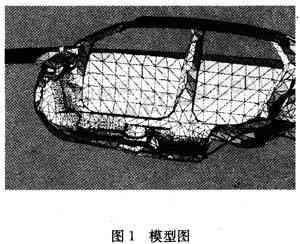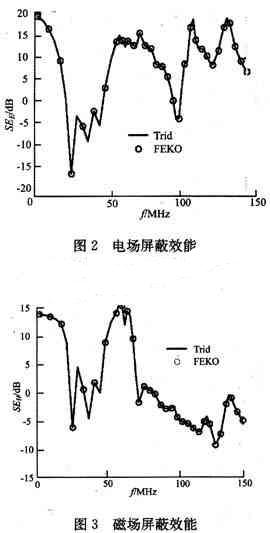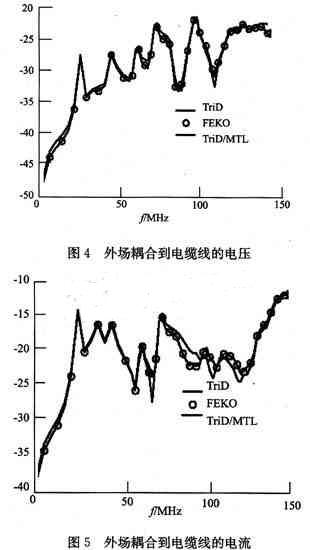0 Preface
This article refers to the address: http://
With the continuous development of electronic technology, more and more new technologies are applied to the automotive field, so each electronic device and electronic control system must adapt to each other, which is the electromagnetic compatibility (EMC) requirement. To ensure vehicle reliability, designers must analyze electromagnetic compatibility issues at an early design stage. Some electromagnetic compatibility analysis software has been introduced on the market to help engineers complete the electromagnetic compatibility design of automobiles.
According to the applicability of software, the electromagnetic compatibility analysis software introduced in the market can be divided into two categories: board-level electromagnetic compatibility analysis software and system-level electromagnetic compatibility analysis software.
Automotive electronics is a system-level electromagnetic compatibility analysis. The applicable software is: EMC studio, HFSS, FEKO, EMC2000, FLO/EMC, PAM-CEM.
The electromagnetic compatibility analysis of automobile electronics refers to the determination of the path and coupling mode of interference by analyzing the characteristics and technical parameters of various interference sources according to the specific technical parameters of the vehicle and the actual applicable environment of the vehicle when designing the overall electrical circuit of the vehicle. Then, various measures are taken to suppress interference, eliminate the coupling of interference, and enhance the anti-interference ability of the interfered object, so that the automotive electronic products and equipment work normally. The EMC in a car depends in most cases on the metal body, connecting cables, electronic control units (ECUs) and electronic components, antennas.
By accurately simulating the points listed above and selecting the appropriate calculation method, it is possible to make accurate predictions for EMC.
1 necessary tools for calculating car parts
The necessary tools for calculating automotive components are: (1) Procedures for calculating 3D electromagnetic fields: Solving Maxwell equations, considering body structure/testing devices; (2) Transmission line calculation procedures: Transmission line equation solutions, taking into account external field effects into the system (3) Circuit calculation program: calculation of circuit equations, taking into account the effects of complex loads.
2 Comparison of calculation methods
(1) The advantage of the electromagnetic field calculation program MOM is that the scattering of the field takes into account the real three-dimensional geometry; the limitation is that it cannot be used to calculate a customized cable package, and it is impossible to consider the complex current with a nonlinear termination device, It is difficult to handle both insulating and magnetic materials; the accuracy depends on the quality of the mesh.
(2) The advantage of the transmission line calculation program MTL is: the frequency depends on the cable parameters considered, three independent components: source, cable and load, and high calculation speed; the limitation is: the transmission line calculation can not take into account any three-dimensional geometry. It is only close to the real three-dimensional case; the accuracy depends on the calculation of the LC parameters and the longitudinal segmentation accuracy along the direction of the metal line.
(3) The advantages of circuit calculation program (SPICE) are: complex circuit, time domain calculation, simple nonlinear description; defects are: program can not guide EMC problem, limited to electromagnetic field, large system stability problem; accuracy: use Accurate models are highly accurate and have very few accurate models.
(4) Hybrid method
Combination of different methods: focus on advantages and discard defects.
The 13D EM program + transmission line calculation program uses the 3D electromagnetic solver to calculate the electromagnetic field and the field using the transmission line excitation source when there is no metal line.
2 Transmission line calculation program + circuit calculation program The transmission line system is subdivided into small segments, each of which is a current model with lumped parameters.
Under such methods, the load device (including non-linear) can use the Circuit Analysis Tool (SPICE).
3 build a model
Establishing the right model is the key to solving automotive electromagnetic compatibility problems. In order to accurately calculate the radiation, conducted emissions and anti-interference problems, the body and the connecting cable must be terminated in detail. First import the body files, the software usually automatically divides the grid. Then define the connection cable, antenna structure, equipment, and so on. Define the device to use the schematic or SPICE file, as shown in Figure 1. 
4 automotive electromagnetic compatibility analysis process
(1) Adjust component requirements according to the desired ECU function;
(2) Adjust component requirements according to specified vehicle functions;
(3) define the necessary specifications of the component;
(4) Design and optimize components;
(5) Check if the cable layout meets the electromagnetic compatibility requirements;
(6) Automotive EMC calculation;
(7) Re-analyze after adjusting the components and cable layout according to the problem.
5 analysis results comparison
The external field shielding effectiveness (θ=80°, η=90°, φ=45°) was calculated using the TriD (moment method) and FEKO software in EMC studio, as shown in Figures 2 and 3.

Different algorithms are used to calculate the voltage and current of the incident field coupled into the cable (TriD-moment method, FEKO-moment method, hybrid algorithm of TriD/MTL moment method and transmission line method), as shown in Figures 4 and 5. 
Using different algorithms of FEKO and EMC studio software, the shielding performance, field-to-cable coupling, cable radiation, cable-to-antenna coupling, etc. were found. The calculation results of different software and different algorithms are very consistent and consistent with the actual test results. Just the software calculation speed is different under the same hardware environment, EMC studio calculation is faster. Figure 6 shows the time required to solve the same number of mesh problems using the same configuration computer.
6 Conclusion
Choosing automotive system electromagnetic compatibility design analysis software requires different tools and algorithms to be selected according to different needs of users. Each algorithm is mature, and the calculation results of different algorithms are basically consistent on the basis of correctly building the model. With the help of analysis software, electromagnetic compatibility issues in automotive systems can be discovered and resolved sooner or later.
Stainless Steel Fine Tube,Disposable SS Fine Tube For Laboratory,Medical Stainless Steel Fine Tube,High Precision Stainless Steel Fine Tube
ShenZhen Haofa Metal Precision Parts Technology Co., Ltd. , http://www.haofametals.com
